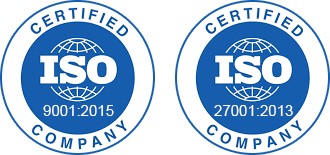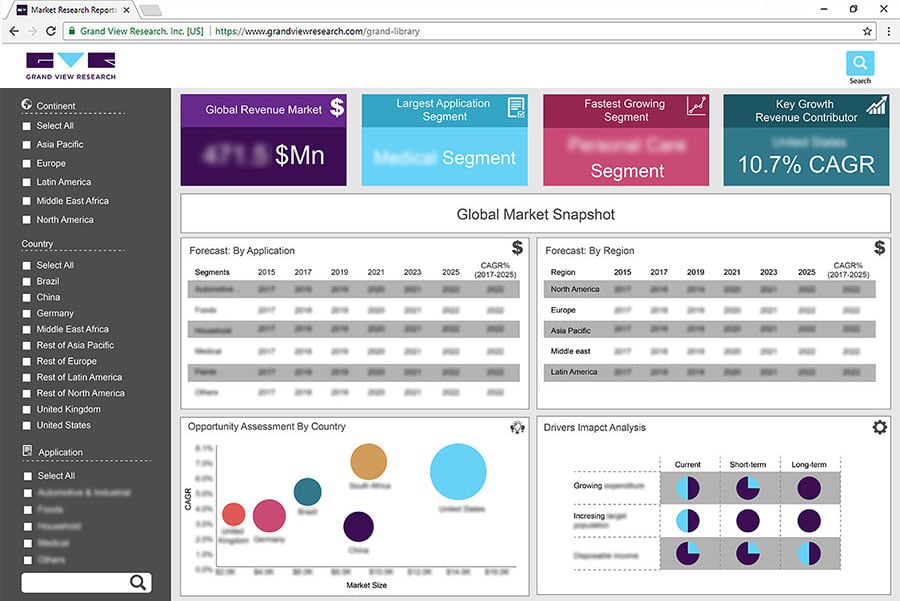
Underground Hydrogen Storage Market Size, Share & Trends Analysis Report By Storage Type (Porous Media Storage, Salt Caverns, Engineered Cavities), By Region, And Segment Forecasts, 2024 - 2030
- Report ID: GVR-4-68040-028-6
- Number of Report Pages: 100
- Format: PDF, Horizon Databook
- Historical Range: 2018 - 2022
- Forecast Period: 2024 - 2030
- Industry: Energy & Power
Market Segmentation
- Underground hydrogen storage Type Outlook (Volume, MCM, 2018 - 2030)
- Porous media storage
- Salt Caverns
- Engineered cavities
- Underground hydrogen storage Regional Outlook (Volume, MCM, 2018 - 2030)
- North America
- North America underground hydrogen storage Market, By Storage Type
- Porous media storage
- Salt Caverns
- Engineered cavities
- U.S.
- U.S. underground hydrogen storage Market, By Storage Type
- Porous media storage
- Salt Caverns
- Engineered cavities
- U.S. underground hydrogen storage Market, By Storage Type
- Canada
- Canada underground hydrogen storage Market, By Storage Type
- Porous media storage
- Salt Caverns
- Engineered cavities
- Canada underground hydrogen storage Market, By Storage Type
- North America underground hydrogen storage Market, By Storage Type
- Europe
- Europe underground hydrogen storage Market, By Storage Type
- Porous media storage
- Salt Caverns
- Engineered cavities
- Germany
- Germany underground hydrogen storage Market, By Storage Type
- Porous media storage
- Salt Caverns
- Engineered cavities
- Germany underground hydrogen storage Market, By Storage Type
- France
- France underground hydrogen storage Market, By Storage Type
- Porous media storage
- Salt Caverns
- Engineered cavities
- France underground hydrogen storage Market, By Storage Type
- UK
- UK underground hydrogen storage Market, By Storage Type
- Porous media storage
- Salt Caverns
- Engineered cavities
- UK underground hydrogen storage Market, By Storage Type
- Europe underground hydrogen storage Market, By Storage Type
- Asia Pacific
- Asia Pacific underground hydrogen storage Market, By Storage Type
- Porous media storage
- Aquifer
- Salt Caverns
- Engineered cavities
- Australia
- Australia underground hydrogen storage Market, By Storage Type
- Porous media storage
- Salt Caverns
- Engineered cavities
- Australia underground hydrogen storage Market, By Storage Type
- China
- China underground hydrogen storage Market, By Storage Type
- Porous media storage
- Salt Caverns
- Engineered cavities
- China underground hydrogen storage Market, By Storage Type
- India
- India underground hydrogen storage Market, By Storage Type
- Porous media storage
- Salt Caverns
- Engineered cavities
- India underground hydrogen storage Market, By Storage Type
- Japan
- Japan underground hydrogen storage Market, By Storage Type
- Porous media storage
- Salt Caverns
- Engineered cavities
- Japan underground hydrogen storage Market, By Storage Type
- Asia Pacific underground hydrogen storage Market, By Storage Type
- Latin America
- Latin America underground hydrogen storage Market, By Storage Type
- Porous media storage
- Salt Caverns
- Engineered cavities
- Mexico
- Mexico underground hydrogen storage Market, By Storage Type
- Porous media storage
- Salt Caverns
- Engineered cavities
- Mexico underground hydrogen storage Market, By Storage Type
- Brazil
- Brazil underground hydrogen storage Market, By Storage Type
- Porous media storage
- Salt Caverns
- Engineered cavities
- Brazil underground hydrogen storage Market, By Storage Type
- Latin America underground hydrogen storage Market, By Storage Type
- Middle East and North Africa
- Middle East and North Africa underground hydrogen storage Market, By Storage Type
- Porous media storage
- Salt Caverns
- Engineered cavities
- Algeria
- Algeria underground hydrogen storage Market, By Storage Type
- Porous media storage
- Salt Caverns
- Engineered cavities
- Algeria underground hydrogen storage Market, By Storage Type
- Egypt
- Egypt underground hydrogen storage Market, By Storage Type
- Porous media storage
- Salt Caverns
- Engineered cavities
- Egypt underground hydrogen storage Market, By Storage Type
- Libya
- Libya underground hydrogen storage Market, By Storage Type
- Porous media storage
- Salt Caverns
- Engineered cavities
- Libya underground hydrogen storage Market, By Storage Type
- UAE
- UAE underground hydrogen storage Market, By Storage Type
- Porous media storage
- Salt Caverns
- Engineered cavities
- UAE underground hydrogen storage Market, By Storage Type
- Middle East and North Africa underground hydrogen storage Market, By Storage Type
- North America
Underground Hydrogen Storage Market Dynamics
Drivers - Increase in the adoption of hydrogen technologies
Hydrogen technologies have seen an increase in interest and development in recent years due to their potential to provide a clean and sustainable source of energy. Hydrogen can be used to power fuel cells, which can generate electricity with high efficiency and zero emissions. One of the main drivers for hydrogen technologies is the need to reduce greenhouse gas emissions, particularly in the transportation sector. Hydrogen fuel cell vehicles emit only water vapor and can have a range and refueling time similar to gasoline-powered cars. This makes them a promising alternative to traditional internal combustion engines, which are a major source of air pollution and contribute significantly to climate change. Another factor contributing to the increase in hydrogen technologies is the reducing cost of production. In the past, hydrogen was expensive to produce because it had to be made from natural gas, which required a significant amount of energy. However, advances in electrolysis, a process that uses electricity to split water into hydrogen and oxygen, have made it possible to produce hydrogen from renewable sources such as solar and wind power. This has the potential to make hydrogen a competitive and clean energy source.
Drivers - Lack of practical alternatives
Underground hydrogen storage is presently the only workable large-scale storage technology available for hydrogen owing to its capability to securely store large quantities of hydrogen in a compact and safe location. One of the chief benefits of underground storage is that it is much safer than above-ground storage due to the fact that hydrogen has a very low flash point and is extremely flammable. Underground storage eradicates the danger of mishaps or leaks as it is stored deep under the ground inside a sealed container. This also indicates that there is no jeopardy of damage to the surrounding environment or infrastructure in case of any accident. Another advantage of underground storage is that it is much more efficient than above-ground storage. Above-ground storage requires a large amount of space to store hydrogen, which can be expensive and impractical for large-scale storage. Underground storage, on the other hand, allows for the storage of large quantities of hydrogen in a much smaller space, making it a more cost-effective option. In addition, underground storage is more secure than above-ground storage. Above-ground storage is vulnerable to natural disasters such as earthquakes and storms, as well as man-made threats such as vandalism or sabotage. Underground storage, on the other hand, is protected from these threats and is much less likely to be damaged or compromised.
Restraints - High cost of building and maintenance of underground hydrogen storage
The high cost of underground hydrogen storage is a significant issue for the hydrogen market. One reason for this is that the cost of building and maintaining underground storage systems can be quite high especially compared to above-ground storage systems. This can make it difficult for companies and organizations to justify the additional expense, especially if they are only using hydrogen in small quantities. Another issue is that the high cost of underground storage can make it difficult for companies and organizations to compete with other sources of energy such as fossil fuels. These sources of energy are often much cheaper, making it difficult for hydrogen to compete on price. The high cost of underground storage may also make it difficult for companies and organizations to attract investment or financing for their projects. Investors may be hesitant to invest in projects with high upfront costs, especially if there is a risk of low returns or delays in the project.
What Does This Report Include?
This section will provide insights into the contents included in this underground hydrogen storage market report and help gain clarity on the structure of the report to assist readers in navigating smoothly.
Underground hydrogen storage market qualitative analysis
-
Industry overview
-
Industry trends
-
Market drivers and restraints
-
Market size
-
Growth prospects
-
Porter’s analysis
-
PESTEL analysis
-
Key market opportunities prioritized
-
Competitive landscape
-
Company overview
-
Financial performance
-
Product benchmarking
-
Latest strategic developments
-
Underground hydrogen storage market quantitative analysis
-
Market size, estimates, and forecast from 2018 to 2030
-
Market estimates and forecast for product segments up to 2030
-
Regional market size and forecast for product segments up to 2030
-
Market estimates and forecast for application segments up to 2030
-
Regional market size and forecast for application segments up to 2030
-
Company financial performance



